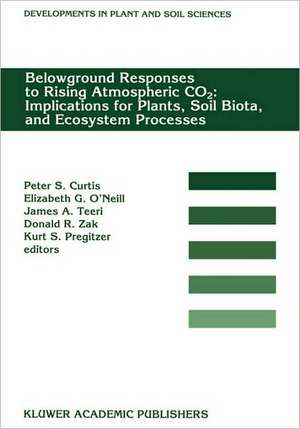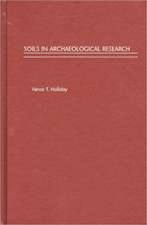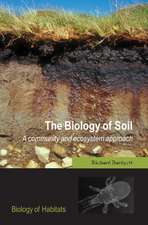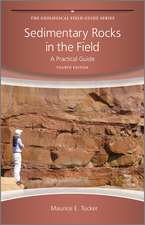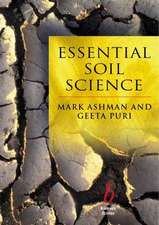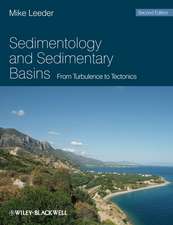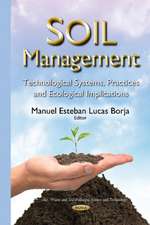Belowground Responses to Rising Atmospheric CO2: Implications for Plants, Soil Biota, and Ecosystem Processes: Proceedings of a workshop held at the University of Michigan Biological Station, Pellston, Michigan, USA, May 29–June 2, 1993: Developments in Plant and Soil Sciences, cartea 60
Editat de P. S. Curtis, G. O'Neill, James A. Teeri, Donald R. Zak, Kurt S. Pregitzeren Limba Engleză Hardback – 31 dec 1994
| Toate formatele și edițiile | Preț | Express |
|---|---|---|
| Paperback (1) | 637.28 lei 6-8 săpt. | |
| SPRINGER NETHERLANDS – 4 feb 2011 | 637.28 lei 6-8 săpt. | |
| Hardback (1) | 644.82 lei 6-8 săpt. | |
| SPRINGER NETHERLANDS – 31 dec 1994 | 644.82 lei 6-8 săpt. |
Din seria Developments in Plant and Soil Sciences
- 18%
 Preț: 1225.94 lei
Preț: 1225.94 lei -
 Preț: 391.79 lei
Preț: 391.79 lei - 18%
 Preț: 1225.94 lei
Preț: 1225.94 lei - 18%
 Preț: 1228.29 lei
Preț: 1228.29 lei - 18%
 Preț: 1246.95 lei
Preț: 1246.95 lei - 24%
 Preț: 1073.19 lei
Preț: 1073.19 lei - 18%
 Preț: 970.70 lei
Preț: 970.70 lei - 24%
 Preț: 1073.79 lei
Preț: 1073.79 lei -
 Preț: 396.24 lei
Preț: 396.24 lei -
 Preț: 386.81 lei
Preț: 386.81 lei - 15%
 Preț: 699.93 lei
Preț: 699.93 lei -
 Preț: 384.86 lei
Preț: 384.86 lei - 18%
 Preț: 1221.69 lei
Preț: 1221.69 lei - 18%
 Preț: 1233.06 lei
Preț: 1233.06 lei -
 Preț: 399.12 lei
Preț: 399.12 lei - 18%
 Preț: 1227.67 lei
Preț: 1227.67 lei -
 Preț: 383.93 lei
Preț: 383.93 lei - 18%
 Preț: 1826.85 lei
Preț: 1826.85 lei - 18%
 Preț: 1232.09 lei
Preț: 1232.09 lei - 15%
 Preț: 646.94 lei
Preț: 646.94 lei - 18%
 Preț: 1231.47 lei
Preț: 1231.47 lei - 15%
 Preț: 650.55 lei
Preț: 650.55 lei - 15%
 Preț: 638.24 lei
Preț: 638.24 lei - 18%
 Preț: 955.08 lei
Preț: 955.08 lei -
 Preț: 385.61 lei
Preț: 385.61 lei -
 Preț: 382.36 lei
Preț: 382.36 lei -
 Preț: 407.98 lei
Preț: 407.98 lei -
 Preț: 393.35 lei
Preț: 393.35 lei - 18%
 Preț: 1224.54 lei
Preț: 1224.54 lei - 18%
 Preț: 1222.01 lei
Preț: 1222.01 lei - 18%
 Preț: 1228.15 lei
Preț: 1228.15 lei -
 Preț: 382.95 lei
Preț: 382.95 lei - 18%
 Preț: 1227.84 lei
Preț: 1227.84 lei
Preț: 644.82 lei
Preț vechi: 758.60 lei
-15% Nou
Puncte Express: 967
Preț estimativ în valută:
123.40€ • 128.36$ • 101.88£
123.40€ • 128.36$ • 101.88£
Carte tipărită la comandă
Livrare economică 15-29 aprilie
Preluare comenzi: 021 569.72.76
Specificații
ISBN-13: 9780792329015
ISBN-10: 0792329015
Pagini: 184
Ilustrații: VIII, 174 p.
Dimensiuni: 210 x 279 x 16 mm
Greutate: 0.54 kg
Ediția:Reprinted from PLANT AND SOIL, 165:1, 1995
Editura: SPRINGER NETHERLANDS
Colecția Springer
Seria Developments in Plant and Soil Sciences
Locul publicării:Dordrecht, Netherlands
ISBN-10: 0792329015
Pagini: 184
Ilustrații: VIII, 174 p.
Dimensiuni: 210 x 279 x 16 mm
Greutate: 0.54 kg
Ediția:Reprinted from PLANT AND SOIL, 165:1, 1995
Editura: SPRINGER NETHERLANDS
Colecția Springer
Seria Developments in Plant and Soil Sciences
Locul publicării:Dordrecht, Netherlands
Public țintă
ResearchCuprins
1. Belowground responses to rising atmospheric CO2: Implications for plants, soil biota and ecosystem processes. Executive summary.- Root Biology.- 2. Issues and perspectives for investigating root responses to elevated atmospheric carbon dioxide.- 3. Root response to Co2 enrichment and nitrogen supply in loblolly pine.- 4. Free-air CO2 enrichment of cotton: Vertical and lateral root distribution patterns.- 5. Above- and belowground response of Populus grandidentata to elevated atmospheric CO2 and soil N availability.- Soil Biota.- 6. Responses of soil biota to elevated atmospheric carbon dioxide.- 7. Soil microbial response in tallgrass prairie to elevated CO2.- 8. The response of mycorrhizal colonization to elevated CO2 and climate change in Pascopyrum smithii and Bouteloua gracilis.- 9. Effect of elevated CO2 on mycorrhizal colonization of loblolly pine (Pinus taeda L.) seedlings.- 10. Evaluation of the use of a model rhizodeposition technique to separate root and microbial respiration in soil.- Ecosystem Processes.- 11. Biomass production in a nitrogen-fertilized, tallgrass prairie ecosystem exposed to ambient and elevated levels of CO2.- 12. Effects of elevated CO2 and nitrogen fertilization pretreatments on decomposition on tallgrass prairie leaf litter.- 13. Soil pCO2, soil respiration, and root activity in CO2-fumigated and nitrogen-fertilized ponderosa pine.- 14. Enhanced root system C-sink activity, water relations and aspects of nutrient acquisition in mycotrophic Bouteloua gracilis subjected to CO2 enrichment.- Modelling.- 15. Modelling the belowground response of plants and soil biota to edaphic and climatic change — What can we expect to gain?.- 16. Carbon cost of root systems: An architectural approach.
Recenzii
`Such a highly valuable reading deserves wide circulation.'
Biologia Plantarum, 38:1 (1996)
`It can be recommended to all those working in plant, soil and environmental sciences, especially to those who are interested in global climate and environment changing.'
Journal of Plant Physiology, 149 (1996)
Biologia Plantarum, 38:1 (1996)
`It can be recommended to all those working in plant, soil and environmental sciences, especially to those who are interested in global climate and environment changing.'
Journal of Plant Physiology, 149 (1996)
